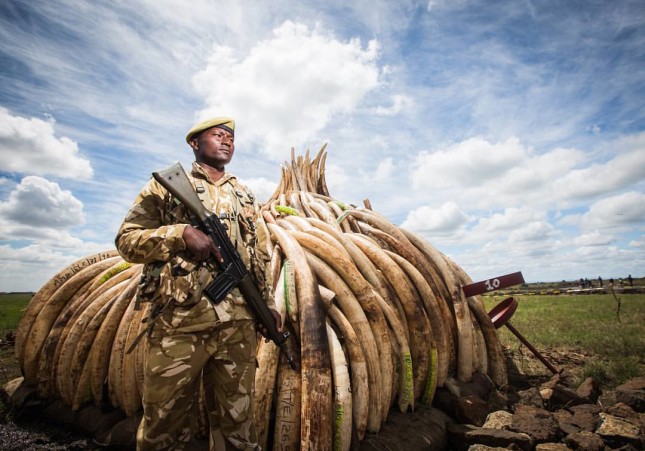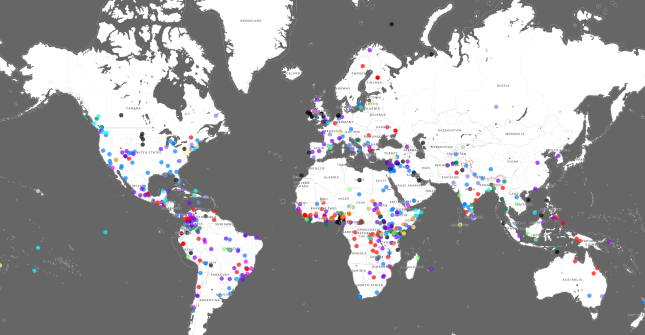-
New Developments in the Field of Environmental Peacebuilding

For those working at the intersection of environment, conflict, and peace, 2018 was a notable year. A new conceptual and operational framework for environmental peacebuilding began to emerge. Two particularly substantial developments in 2018 helped to institutionalize environmental peacebuilding: the debut of a massive open online course (MOOC) on environmental security and sustaining peace and the launch of the Environmental Peacebuilding Association.
Environmental peacebuilding is the process of governing and managing natural resources and the environment to support durable peace. It operates across the conflict lifecycle, and includes efforts to prevent, mitigate, resolve, and recover from violent conflict.
Environmental peacebuilding addresses renewable natural resources, non-renewable natural resources, and ecosystems. Most importantly, it links diverse concepts and activities, such as the water’s role as a source of conflict; good environmental governance as a means of conflict prevention; shared natural resources as an entry point for dialogue or as a basis for cooperation and trust-building; post-conflict peacebuilding and natural resource management; and conflict-sensitive natural resource development.
First Massive Open Online Course on Environmental Peacebuilding Debuts
In March 2018, the first MOOC on Environmental Security and Sustaining Peace drew 10,000 people from 170 countries. The eight-week course introduced students to the field of environmental peacebuilding with faculty from UN Environment, the Environmental Law Institute, Columbia University, Duke University, the University of California-Irvine, the UN Development Programme, and American University providing an overview of core dynamics and approaches for making environment a cause for peace. They used case studies to illustrate key concepts, highlight characteristics of successful interventions, and demonstrate tools that can be used to minimize the environmental impacts of reconstruction. The course was organized in partnership with the SDG Academy and the nascent Environmental Peacebuilding Association, and it broke previous records for MOOC enrollments at the academy.
The online course has helped to grow the field of environmental peacebuilding to meet the pressing challenges related to natural resources and peace around the world. It yielded three important lessons.
First, one-to-many remote learning opportunities like this are a cost-effective way to expand the reach of the environmental peacebuilding field and equip future leaders with the knowledge and skills they need to make an impact at the local level. Collaborative efforts with traditional educational institutions multiplied the effects of the course. Many universities had classes sign up for the MOOC while it was running. After it ran, 19 universities in Kenya, Uganda, Cameroon, China, Mexico, Canada, the United States, and Norway committed to using videos and related materials from the online class in their own courses. The MOOC helped to spread the vocabulary related to peace and natural resource management, so that people around the world could speak a shared language. In July 2018, for instance, at a government project in Marawi City, Philippines, Environment and Natural Resources Secretary Roy Cimatu announced a strategy of “sustaining peace and achieving sustainable development goals through environmental peacebuilding.”
The second lesson was that to be effective, such MOOCs require innovation and engagement. During the class, a rich exchange of knowledge took place between participants in 170 countries. The course’s discussion groups and office hours created spaces for dialogue. Discussion groups focused on water security, climate change, West Africa, and petroleum products, among dozens of topics. Twenty of these groups engaged more than 100 members, underscoring widespread student interest and engagement. Additionally, mapping exercises using the UN’s MapX platform allowed students to share experiences in problems and innovative solutions natural resources and conflict. An example of the collaborative mapping exercise is shown below, with conflict-affected locations color-coded by category of natural resource.


The MOOC highlighted the possible symbioses between educators and students in the context of online learning. Course material presented by the course’s faculty from leading research and policy institutions was enhanced by student-generated knowledge, and student interest directed the flow of conversation in office hours. After the course ended, the teaching team continued to receive inquiries about re-using the course material in other contexts and heard how the curriculum was being applied in real time.
Finally, the MOOC was an important way to bring together people who work in or are otherwise interested in the multiple ways that environment, conflict, and peace are linked. It energized many who then joined the Environmental Peacebuilding Association to continue the exchange, learning, and collaboration.
On February 11, the MOOC will be held for a second time on SDG Academy’s edX platform. The second running features an enhanced platform for student engagement, additional readings, and streamlined exercises. To enroll or learn more, visit the course page at https://www.edx.org/course/environmental-security-and-sustaining-peace-0.
Environmental Peacebuilding Association
The second major development of 2018 was the launch and rapid growth of the Environmental Peacebuilding Association. The Association provides a dedicated space for people working on environment, conflict, and peace to learn, share, and collaborate. In less than a year, it has grown to include more than 240 people in more than 50 countries—and its reach expands every week. The Association has launched a growing array of topical interest groups, holds webinars, and is planning the First International Conference on Environmental Peacebuilding, to be held October 23–25, 2019 in Irvine, California.
It is notoriously difficult to effectively evaluate the full impacts of environmental peacebuilding efforts. It is even more challenging to evaluate the impacts of institutionalizing environmental peacebuilding efforts. With time, though, the online course and establishment of the Environmental Peacebuilding Association are likely to stand as signal developments in the evolution of the exciting new field of environmental peacebuilding.
Sierra Killian is a Research Associate at the Environmental Law Institute (ELI) and coordinates the environmental peacebuilding program.
Carl Bruch is the Director of ELI’s international programs and President of the Environmental Peacebuilding Association.
Sources: edX, Environmental Peacebuilding Association, Environmental Security and Sustaining Peace Massive Open Online Course, Manila Bulletin, MapX
Photo Credit: Ivory and rhino horn to be burned near Nairobi, Kenya, April 2016, courtesy of Mwangi Kirubi.
 A Publication of the Stimson Center.
A Publication of the Stimson Center.








